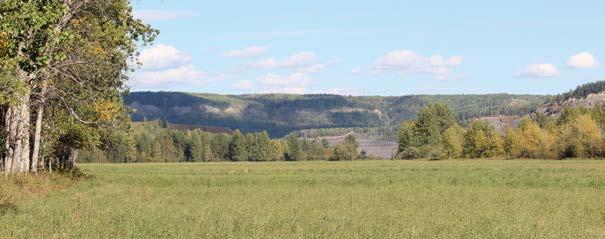
2 minute read
PRESIDENT, THE SOCIETY OF NOTARIES PUBLIC OF BC
PRESIDENT, THE SOCIETY OF NOTARIES PUBLIC OF BC
Thoughts on “Being Green”
Sesame Street is a great TV program that teaches adults and kids many lessons about life and living.
Kermit the Frog liked to sing It’s not easy being green. He really was on to something. If you have tried to reduce your carbon footprint and “go green,” you know it’s no easy task and everyone needs to participate.
I speak from some experience. I have been renovating a 1913 house and have tried to reuse, refinish, and recycle as I update the walls, floors . . . basically everything. There seems to be a prevailing view in construction circles that new is faster, better, and more convenient. Unfortunately, there is a reason for that thought; rip and replace is definitely easier . . . and often cheaper.
Take the lumber you are replacing. Today’s measurements have shrunk; the studs you are replacing are really 2" x 4" but the new 2 x 4 is slightly smaller. The same is true for trims and flooring moldings, the list goes on . . . Existing paint, lathe, and plaster all have their own unique set of questions. Restoration is a labour of love, ingenuity, and a flexible building inspector!
What I have learned from my renovation project is that new is not necessarily better or less green but some things may be. You really need to do your research. There are so many new products and innovations in construction . . . in insulation, materials, wiring, and lighting . . . that can affect your carbon footprint. With a willing contractor and some work on your part, you can do a renovation/restoration project while being historically accurate and environmentally responsible.
Renovating and repurposing existing housing is not new. It is one way to provide housing while cutting back on the resources used to develop housing and maximize the use of space. In some cities, it can be turning a warehouse into a loft project or repurposing a decommissioned church or using modular construction.
New “tiny” home” projects are surfacing around the province. Near
©iStockphoto.com/wichatsurin
me in the neighbouring community of Terrace, seventeen tiny homes are now located in Bluegrass Meadows Micro Village. Similar projects are being considered in a number of communities around the province. They are new homes but are literally “tiny” and so have a much smaller carbon footprint in their construction and in the community. They are a form of “going green” by reducing the resources and land required for housing. They challenge the conventional ideas of municipal zoning, space requirement, and building code rules. They also challenge us to adapt to the smaller living space. It may not be for everyone.
The “green” emphasis is everywhere. There are thousands of “green” projects . . . some real, some questionable, some absolute frauds.
Each of us needs to choose how we want to contribute. Our contribution can be large or small. Among other things, I am trying to remember to take the cloth grocery bags from my car into the grocery store when I shop!
On a more serious note, we all recognize our climate is changing and that our consumption is part of the cause. We will also be part of the solution.
There are lots of ways to “go green.” The choice is yours. s








